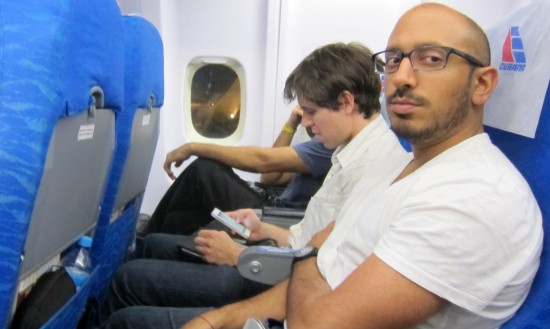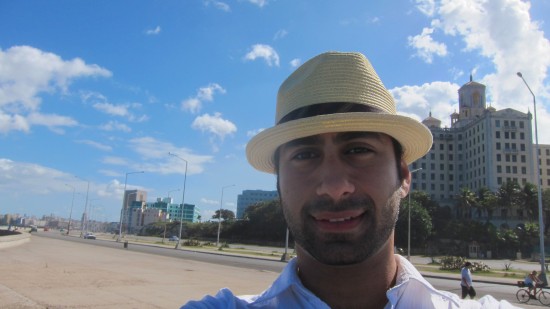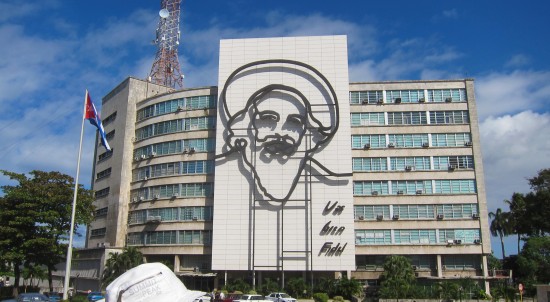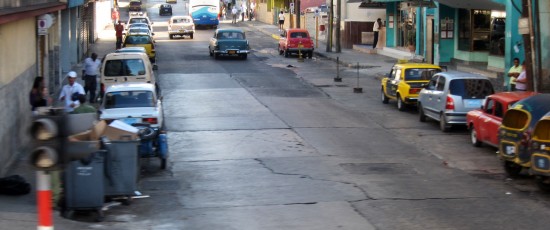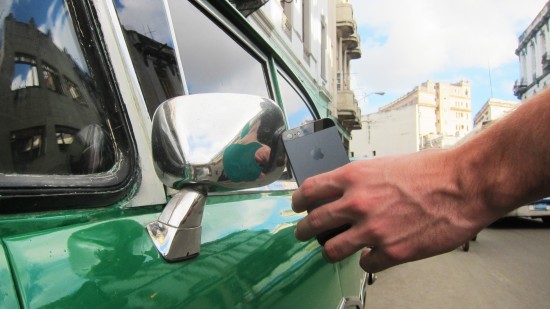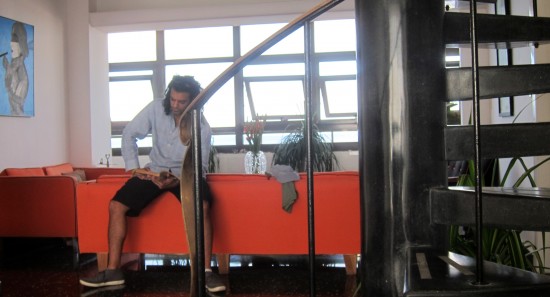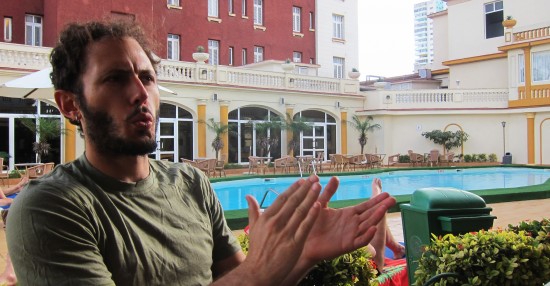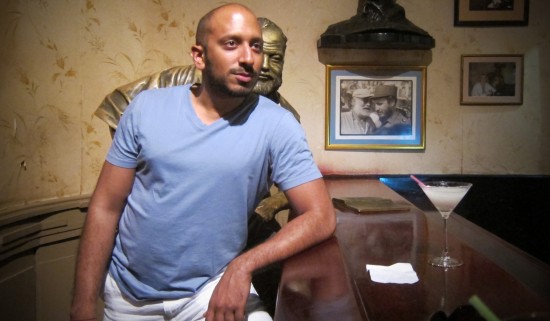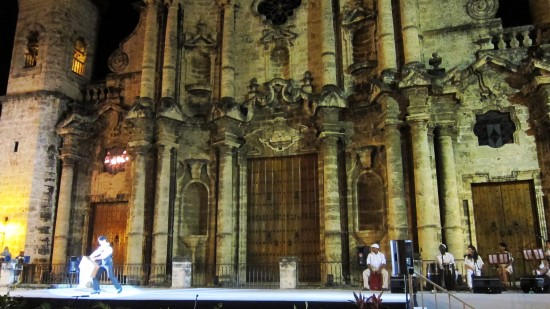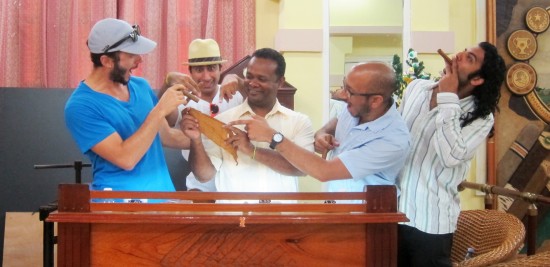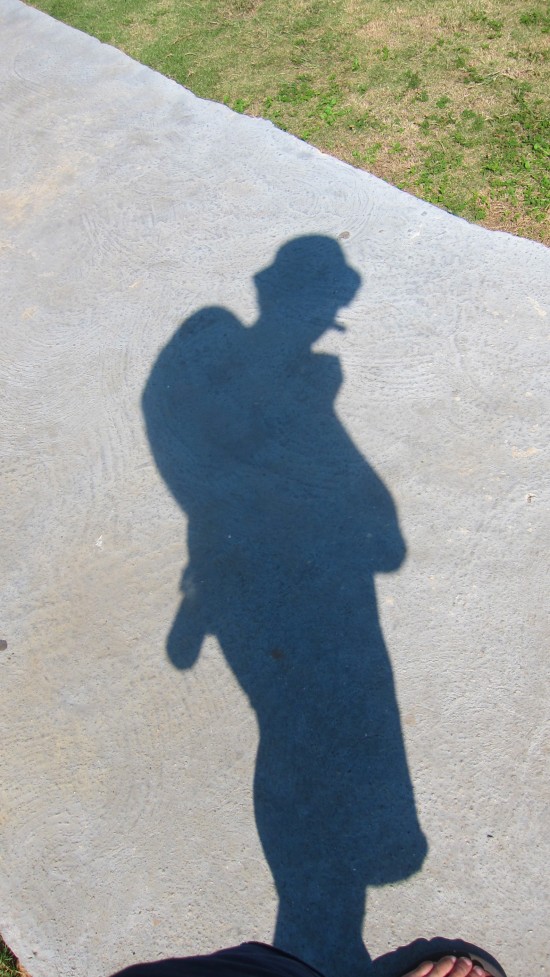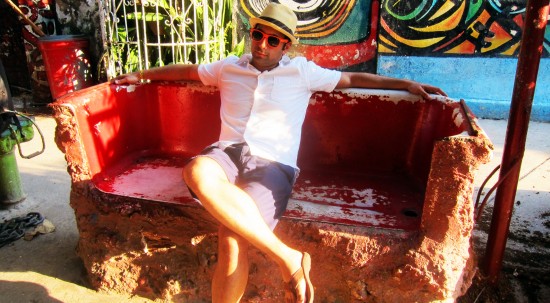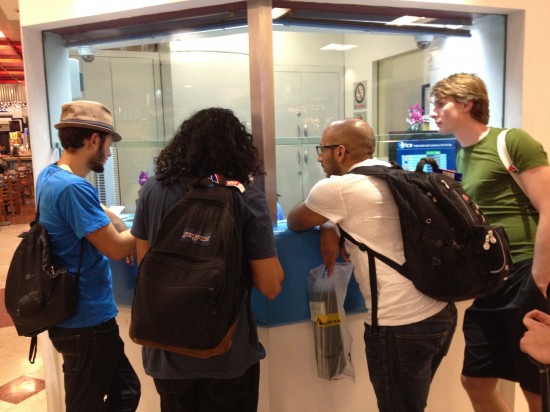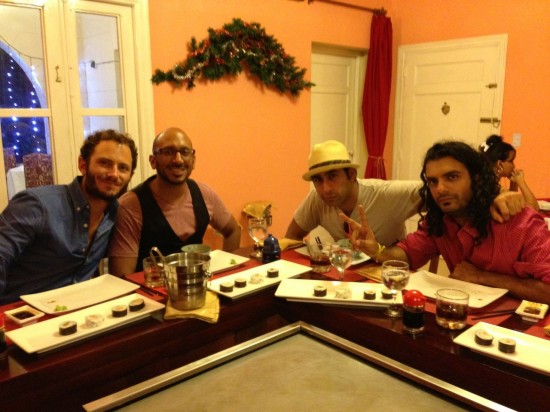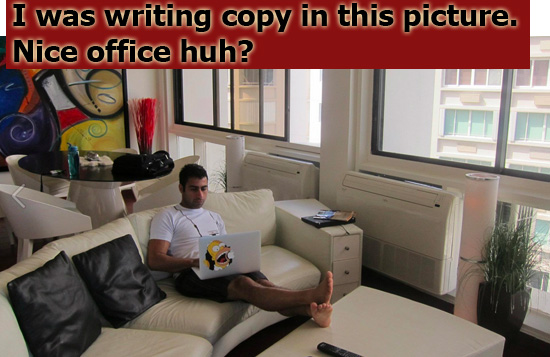For the 1st part of my 30th birthday, I went to the F1 races, then Noah threw me a surprise party that night.
For the 2nd part of my 30th bday, I went to Cuba (actually Noah planned this whole trip too…..that was damn nice of him eh!)
Cuba was appealing because it’s this weird “time capsule” of a place. The United States has an embargo against Cuba, so Cuba has very little importing options….not to mention it’s a communist country (well….I guess technically it’s “socialist”). This means the government can strictly control the imports, exports, the currency….and thus, the people.
For example, for the locals of Cuba:
- …they are not allowed to leave Cuba.
- …they are not allowed to use the internet.
- …they are not supposed to get close with any tourists.
- …they are not allowed to openly talk bad about the government.
- …all sorts of other stuff.
There’s also not a lot of industry going on in Cuba….this means most of the local population is quite poor, many of them making something like $13 to $18 U.S. dollars A MONTH. That’s right, A MONTH.
A doctor in Cuba, even a surgeon, gets paid only $40 A FREAKIN’ MONTH.
Almost hard to believe.
The way they survive on this small sum of money is because Cuba has two currencies (both of which outside of Cuba are worth nothing).
FIRST CURRENCY is called the Cuban Convertible Peso, and is roughly 1-to-1 with American dollars. Tourists use this currency, and prices everywhere are pretty decent with this currency. We could eat a nice lunch, complete with beers, for 6 people, for about $30 to $45. Not bad. Unless you’re eating at the really nice tourist-y places, you probably won’t spend a crazy amount on food.
SECOND CURRENCY is the Cuban Peso, and is for locals only. Tourists aren’t supposed to use it, and the locals aren’t “supposed to” accept it from tourists (notice the “supposed to” in quotes). This currency is 250 per 1 American dollar. My friend heard that you could buy things RIDIIIICCCULOUSLY cheap in local areas if you somehow get a hold of this currency.
He found a place that would let him get some, and he decided to change just $20 U.S. Dollars. The lady at the front asked him, “Ummm….are you SURE?” He agreed, and got a HUGE STACK OF $5,000 IN LOCAL BILLS. It was like a giant strip-club stack of $20 bills!
Whenever we went to local places that accepted this currency, this is what we spent:
- 4 bowls of ice cream at a sit-down ice cream parlor (4 scoops per bowl) = $0.20 USD total
- Bottle of rum + mixers = $2.90 USD
- Personal pizza = $0.15 USD
After paying with local currency at every place possible (sometimes convincing is needed), my friend still had $10 USD in local currency left over!
However almost everyone we spoke with about Cuba told us the local currency was useless for tourists. It worked well for us because 3 of us were brown, and my friend using the currency spoke very fluent Spanish.
However this local currency only worked in certain places, definitely not everywhere. I still ended up spending about $2,000 in six days (about 20% was skimmed off each money exchange, and much of it was to pay for the big penthouse condo we rented).
BRIBING.
One of the greatest parts about living in a society that’s “slightly less than 1st world” is bribing (well…presuming you’re rich in that country….otherwise it sucks for you)!
Anytime there’s a long line at the airport, it “can be solved” with some monetary lubrication.
Anytime you need a table at a restaurant with a huge wait…..no problem.
BEST JOBS IN CUBA:
In a perfect society, I’d think doctors, teachers, and businessmen should make the most money…..HOWEVER, in Cuba, we found out one of the best jobs to ever have is a bartender in a touristy spot!
The bartenders sling drinks all day, and get tipped in Cuba Convertible Pesos (about 1-to-1 with American dollars). This means they can rake in $150+ a day. And when you consider the average Cuban peasant makes something like $13 to $18 a MONTH, that’s a helluvalot of money.
The next best job is a taxi driver. The government “owns” the taxis, but the drivers get to keep much of their tips. Someone shuttling around tourists all day can make decent tips, and support an entire family pretty well on that job.
It was interesting yet kinda sad how a bartender or taxi driver make literally 100x what a doctor makes.
SAFETY:
The country actually felt VERY safe. I have a reasonably good “Spidey Sense” of what situations will get me into “fake” trouble (ex: security guard telling you to stop doing something), and what will get me into “real” trouble (ex: going to jail in a communist country).
….and I gotta say, Cuba was pretty safe. Since their criminal justice system is so harsh on crime, there is very little of it. I heard pickpocketing and petty crimes are reasonably common, but serious crimes are not.
Actually in Mexico and China I’ve felt MUCH stronger security presences than Cuba. I really expected to see armed guards everywhere around Cuba, but alas hardly saw a single one. Even the police officers seemed chill and nice, and about 80% didn’t even carry guns.
Pretty much everywhere we went, the vibe of the country was “super chill”. It was very safe.
GETTING INTO THE COUNTRY FOR U.S. CITIZENS:
Pretty much any other country in the world can openly travel to Cuba with no issue. However Americans can’t legally go “just like that” because of the embargo we have against Cuba since 1962. But there are many options to go:
GETTING A VISA:
American Citizens can go to Cuba legally if they have family members there, going for diplomatic reasons, going for foreign aid reasons……and the most common is “cultural” reasons. This is for students and tourists. There are many tour companies that will charge you money and get you a “legal” visa to Cuba…..but I’m almost certain some of these are scams, read the next way of entering the country:
GOING QUASI-ILLEGALLY:
U.S. citizens can “try” this little stunt if so chosen:
Get a flight to some country such as Mexico, Belize, Guatemala …wherever. Then fly to Havana, Cuba from there. Your passport will get stamped on the way out of the country, however, Cuba stamps only the Cuban visas (which any person can buy at the airport for $25 each). This visa is just a piece of paper that’s NOT affixed to your passport.
This means for Americans, they stamp the paper on the way into the country, and the way out of the country. So your passport is untouched.
For example, one could “just hypothetically” do this:
- Go to Cancun, Mexico.
- Buy a flight to Cuba.
- At the airport, find a place to get Cuban visas. They’re $25 each.
- Fly to Cuba, have a good time.
- Fly back to Cancun.
- Fly back to the U.S.
From what I understand through research and talking to many people who’ve done something similar, the U.S. no longer takes the Cuban embargo ultra-seriously.
THE TIME-CAPSULE EFFECT:
One of the main reasons I wanted to visit Cuba right now, is the “time-capsule” effect the American embargo has on the country. Essentially they have a bunch of old cars from the 50’s rolling around, no internet and very limited cell phone use.
I can go to a rural farm in India, and the farmer will be text messaging his kids. However in Cuba I hardly saw ANY locals with a phone. The only phones I saw being used were carried by hustlers, tourists, or students.
It was also almost wholly “brand-less” when driving around. No billboards, no overt advertisements except inside the actual establishments.
LANGUAGE BARRIER:
You’ll definitely need to know some Spanish if you visit. However you can make it around the tourist-y areas ok without it. All 6 of us on the trip spoke and understood at least A LITTLE Spanish. Two people with us spoke damn-near fluent, so that helped a ton for using local currency, getting information, and exploring areas where tourists don’t go.
CULTURE & MIS-INFORMATION:
Initially I thought we’d see propaganda everywhere, kind of like I’ve seen in China….but to my surprise it was shockingly little. Instead the people are left relatively ignorant of the outside world through not being able to leave the country, no internet, and mainly: Very little access to outside information.
Their bookstores only sold American literature if it was something like an old classic novel (Charles Dickens, Ernest Hemingway etc). There were a lot of books about Fidel Castro and Che Guevara. But completely absent were any new releases.
Almost no Cubans have ever left the country. Almost no information about the outside world is easily seen.
THE CONTINGENCY PLAN:
After researching Cuba, it turns out things were pretty safe. So here’s how I rationalized it:
- 98% chance things would all work out completely fine and we’d all get home safe.
- 1% chance of us getting stopped for questioning….perhaps get a small fine.
- 1% chance that I somehow end up in a Cuban jail with no way out.
In the REALLY OFF CHANCE that I (or someone in the group) were to end up in some really deep-shit trouble whilst in Cuba, I made a small document called “The Contingency Plan.”
I sent the document to two close friends who I trust, and also know my family & friends well enough to get things in motion.
The document contained certain contact information, and also instructions on where to find a small envelope which contained some bank account information. This bank account had immediately access to $200k in cash…..so if by some REMOTE CHANCE I didn’t arrive back home from Cuba…..the contingency plan would kick into gear and be well funded.
After going on the trip and seeing how safe the country actually was, I probably wouldn’t deem a Contingency Plan necessary for the next trip……but it was nice to know I had backups coming for us in case something happened.
SCREW ALL THIS WRITING, HERE’S SOME PICTURES!
Here’s some video highlights of the trip (me and my brother bought a $60 guitar in Cuba and made VERY good use of it)!





